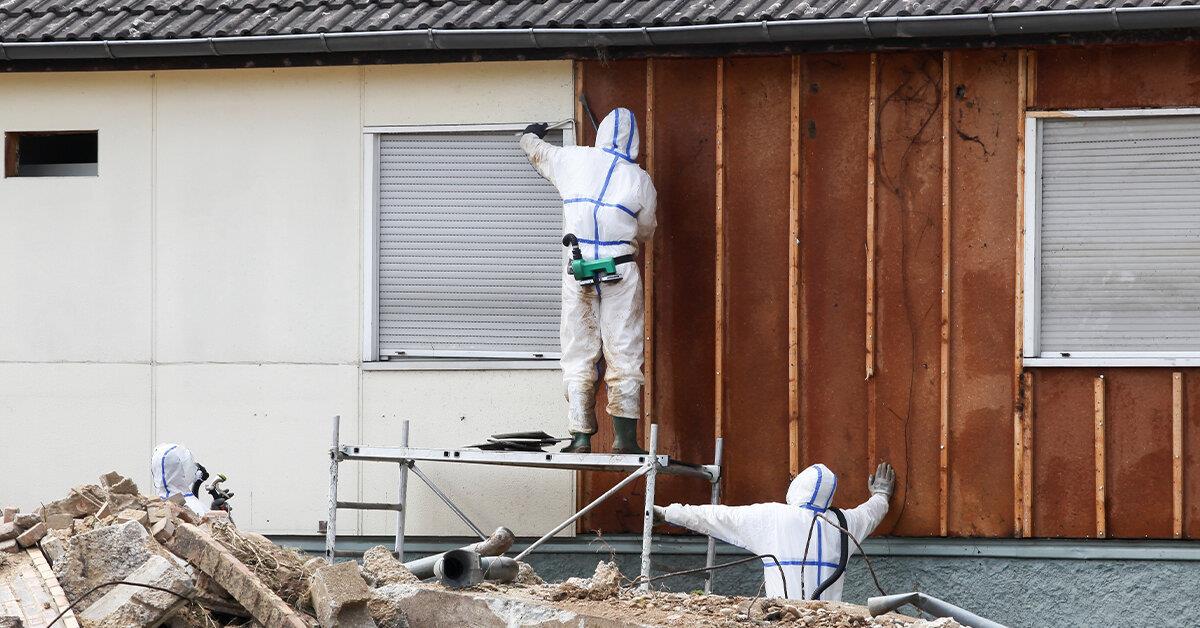
Colorado Hazard Control Provides Side-By-Side Comparison Of Asbestos Removal Vs. Encapsulation, Real Scenarios, And Faqs
| Asbestos Removal | Asbestos Encapsulation | |
| Safety and Risk | Permanently eliminates asbestos, removing all future health and liability risks. | Manages asbestos in place. Safe if coatings remain intact, but risks return if materials are damaged or coatings deteriorate. |
| Cost and Time | Higher upfront cost. Projects may take longer due to containment and safety procedures. | Lower initial cost. Quicker to complete with less disruption to building use. |
| Disruption | Often requires occupants to vacate until clearance testing confirms the building is safe. | Less disruptive. In some cases, work can be completed while occupants remain in place. |
| Long-Term Considerations | Permanent solution with no ongoing asbestos liability once clearance is achieved and put back is complete. | Requires periodic inspections and maintenance. May affect property resale value or insurance coverage. |
| Regulatory and Compliance Issues | Often legally required when asbestos-containing materials are friable (over 1% asbestos that can be crumbled by hand when dry) or before major renovations or demolitions. | Acceptable for intact materials. Must be documented and included in a management plan for schools, and should be documented for other structures as well. |
Factors To Consider for Your Colorado Property
When deciding between asbestos removal and encapsulation for your Colorado property, several critical factors must be weighed. The physical condition of the asbestos-containing material is paramount. If the material is deteriorating, crumbling, or otherwise friable, removal is the safest course of action to prevent dangerous fiber release.
The location is also a key consideration, as removal is the preferred method for high-traffic areas or spaces likely to be disturbed by future renovations. Your budget and timeline will also influence the decision. Encapsulation can be a more budget-friendly option for short-term savings, whereas removal represents a more significant long-term investment that completely resolves the hazard.
Additionally, if you have any upcoming plans for remodeling or demolition, choosing removal from the start is the most practical approach. It is also important to think about future insurance and resale implications, since the presence of encapsulated asbestos may complicate obtaining coverage or completing property transactions.
For detailed guidance specific to state regulations, property owners should consult the resources provided by the Colorado Department of Public Health & Environment (CDPHE) asbestos program.
Removal vs. Encapsulation: Real-World Examples
To better understand when to choose asbestos removal over asbestos encapsulation, a few real-world examples can be helpful. For instance, in an industrial building with friable pipe insulation actively crumbling, the material poses an immediate health hazard, which makes complete removal the necessary and responsible choice.
In a different scenario, such as a residential basement with a stable ceiling containing asbestos tiles in good condition that will not be disturbed, encapsulation can serve as a perfectly safe and effective management solution.
Finally, consider a school needing to address an asbestos issue during a short summer break. Encapsulation could be the ideal approach, as the process is often faster and causes less disruption than a full removal, allowing the work to be completed before students return.
Of course, every property is unique, and you should always get a professional asbestos inspection before making a decision.
Asbestos Removal vs. Encapsulation FAQs
Below are answers to some of the most common questions about asbestos removal and encapsulation.
Can I encapsulate asbestos instead of removing it?
Yes, if asbestos-containing materials are intact. However, encapsulation does not eliminate asbestos, and regular monitoring remains necessary.
Is encapsulation a permanent solution?
No. Coatings can degrade over time. Encapsulation is a management strategy, not an elimination strategy.
Does asbestos removal require building closure?
Typically, yes. Safety protocols often require temporary relocation until clearance is confirmed.
Which method is more cost-effective?
Encapsulation usually costs less upfront. Removal eliminates asbestos liability for good, offering long-term value.
Is asbestos removal required by law in Colorado?
Yes. Removal may be mandated when asbestos is damaged, when it will be disturbed during renovation, or when demolition is planned. Regulations are enforced by OSHA and CDPHE.
Can asbestos in linoleum flooring be encapsulated?
Sometimes. If the linoleum and adhesive are intact and in good condition, encapsulation may be an option. If the flooring is damaged or scheduled for removal, abatement is required.
Can asbestos insulation be encapsulated?
Generally no. Loose or fluffy insulation, such as around pipes or in attics, cannot be safely encapsulated and usually requires removal.
Can popcorn ceilings with asbestos be encapsulated?
Yes, in some cases. A spray-on encapsulant can seal the surface, but this requires professional evaluation. If the ceiling is deteriorating or scheduled for remodeling, removal is often safer.
Learn About Expert Asbestos Management in Colorado
Asbestos removal is a permanent solution but comes with higher costs and temporary disruption. Encapsulation is less expensive and quicker, but requires ongoing monitoring.
The safest way forward is a professional asbestos inspection followed by a management plan tailored to your property's needs, budget, and future plans.
Contact Colorado Hazard Control today for a site-specific evaluation or to learn more about why we're a leader in asbestos management in Colorado.
About Colorado Hazard Control
Colorado Hazard Control is the natural industrial, commercial and residential environmental solutions provider achieving the highest quality workmanship by focusing intensely on what we do best - health, safety, and environmental compliance. With locations in Denver, Colorado Springs and Pueblo, we offer our services statewide. Whatever your needs - lead abatement, mold remediation, radon mitigation, demolition, or training - we're there with 24-hour emergency response available.
Media Contact:
Lynnelle Beaver, 303-410-4941

Legal Disclaimer:
MENAFN provides the
information “as is” without warranty of any kind. We do not accept
any responsibility or liability for the accuracy, content, images,
videos, licenses, completeness, legality, or reliability of the information
contained in this article. If you have any complaints or copyright
issues related to this article, kindly contact the provider above.

















Comments
No comment